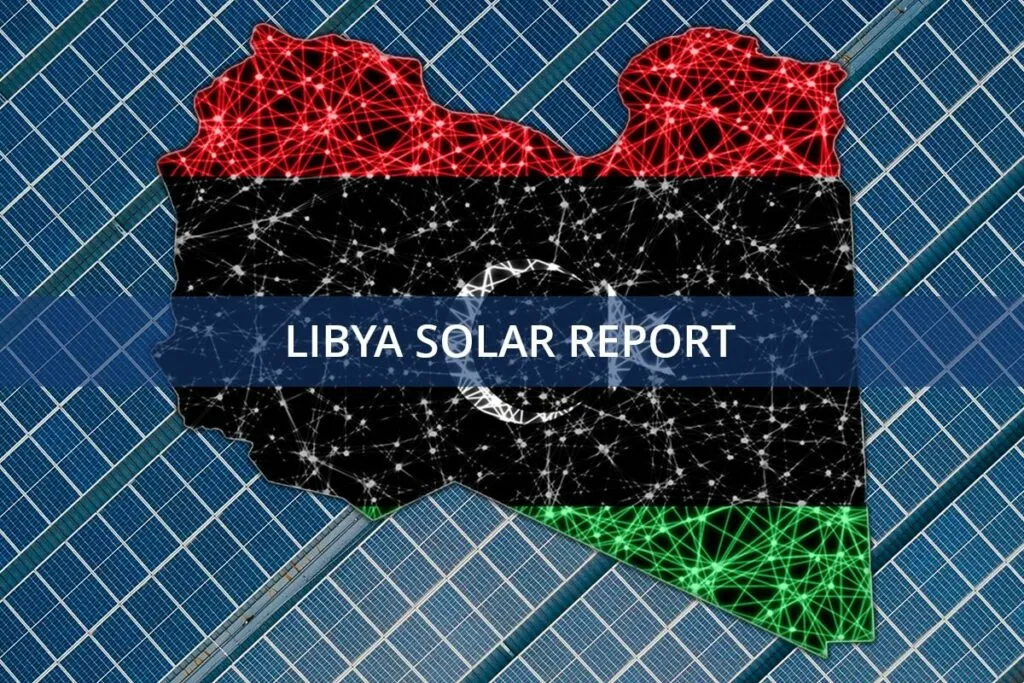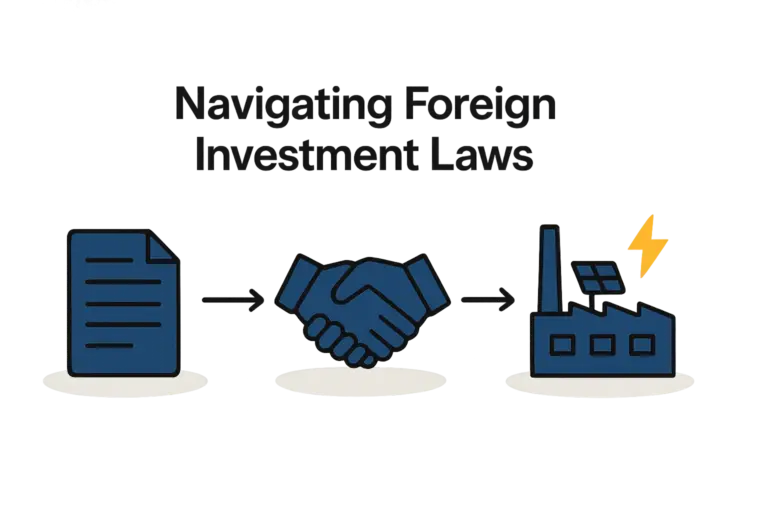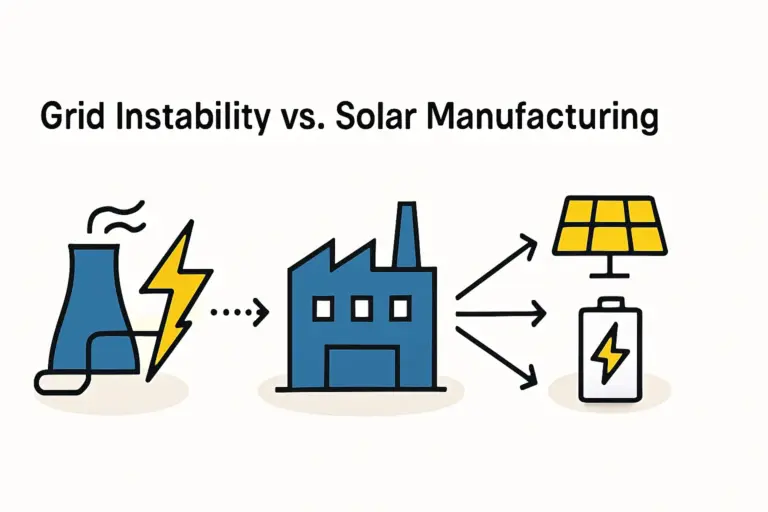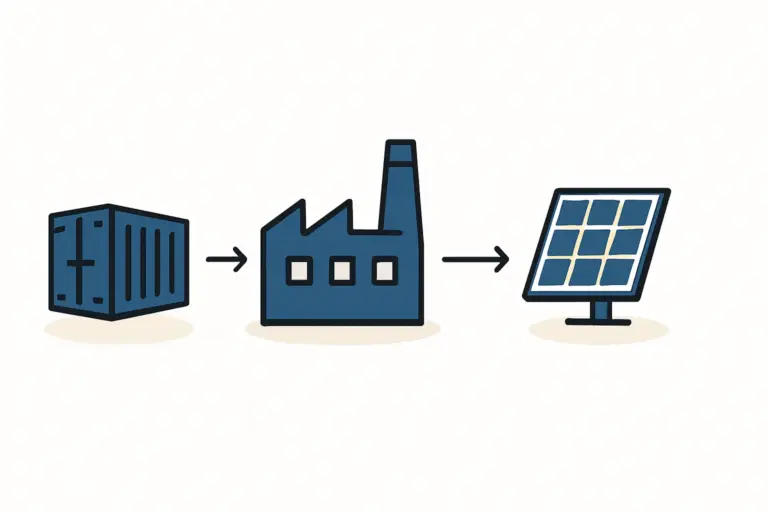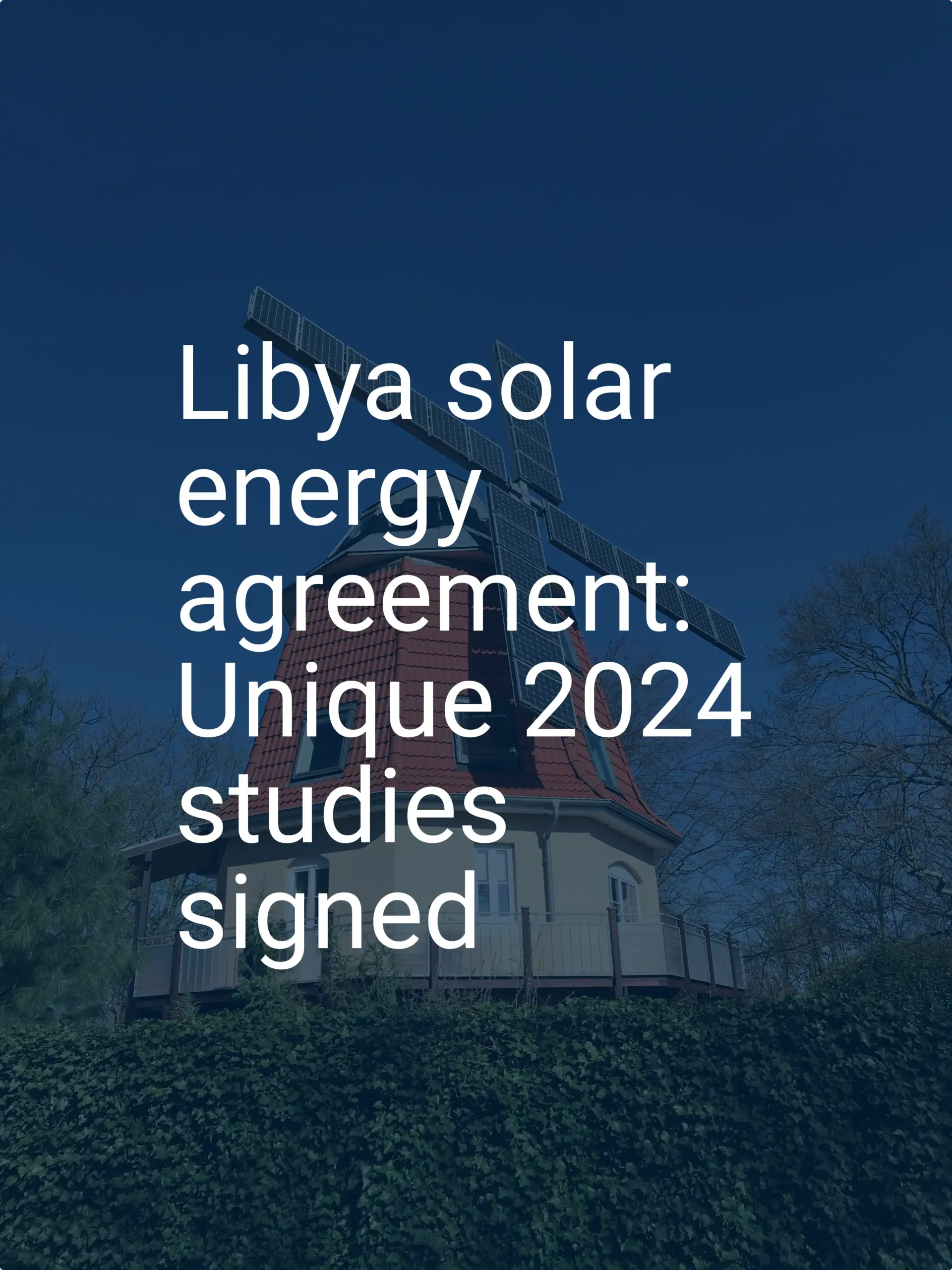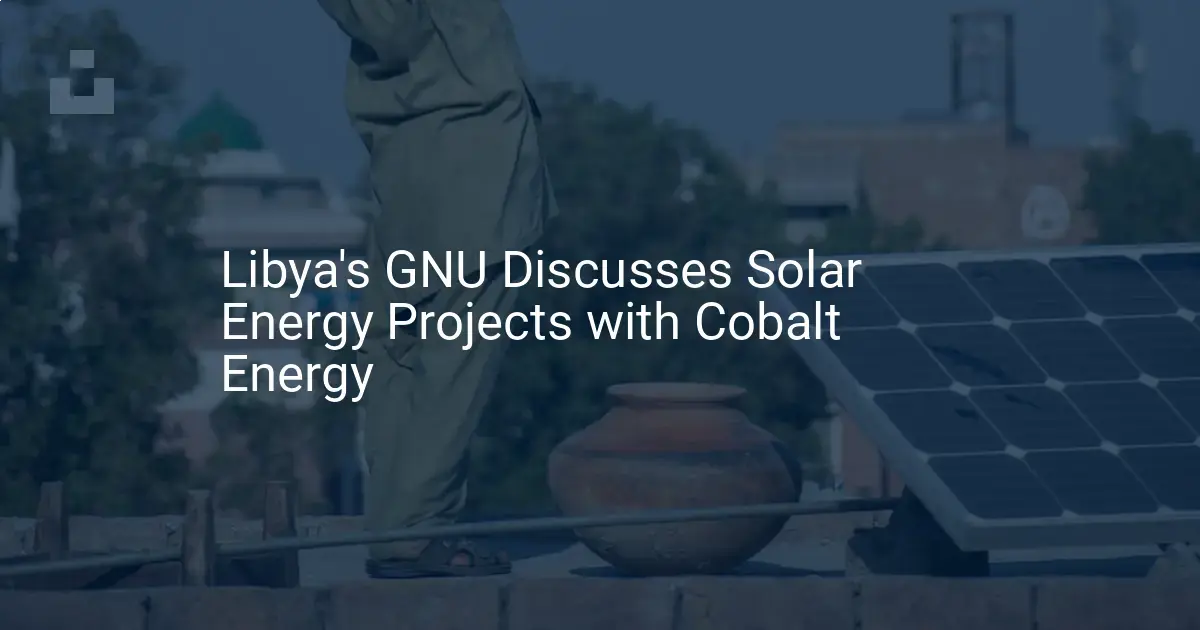An entrepreneur looking at the vast, sun-drenched landscapes of a country like Libya sees an immense opportunity. With some of the highest solar irradiation levels in the world, the potential for solar energy generation appears limitless.
The logical next step seems simple: establish a solar module manufacturing plant to supply the burgeoning local market. Yet, a critical oversight at this stage can lead to significant financial and reputational damage. Modules designed for the moderate climate of Germany will not survive the harsh realities of a desert environment.
This article details the specific technical challenges solar modules face in high-temperature, high-dust regions. We also outline the essential material choices and manufacturing adjustments needed to produce durable, high-performance modules that can withstand these demanding conditions for 25 years or more. For anyone considering how to start a solar panel manufacturing plant in such a market, understanding these requirements is the first step.
Why Standard Solar Modules Underperform in Desert Regions
Most commercially available solar modules are engineered and tested for conditions found in Europe or North America. When deployed in a desert climate, they face a combination of environmental stressors that accelerate their degradation, drastically reducing both performance and operational lifespan.
The Triple Challenge: Heat, Dust, and UV Radiation
- Extreme Heat
Ambient air temperatures in desert regions regularly exceed 45°C. Under direct sunlight, a solar module’s internal temperature can easily reach 75°C or higher. This intense heat has two primary adverse effects:
-
Power Loss: All solar cells have a ‘temperature coefficient,’ which measures how much their power output decreases as their temperature increases. A standard module can lose 15–25% of its rated power output on a very hot day, directly impacting the energy yield and financial returns of a solar project.
-
Material Degradation: Sustained high temperatures accelerate the aging of the polymers used inside the module, such as the EVA (ethylene vinyl acetate) encapsulant. This can lead to ‘browning’ or yellowing, which reduces the amount of light reaching the solar cells, and delamination, where the layers of the module begin to separate.
- Abrasive Dust and Soiling
The impact of dust is twofold:
-
Soiling: A layer of dust and sand on the module’s surface can block sunlight, reducing energy yield by 10–25% or even more in the absence of regular cleaning. In regions where water is scarce, cleaning becomes a significant operational expense.
-
Abrasion: Wind-driven sand acts like sandpaper—a phenomenon known as the ‘sandblasting effect.’ Over time, this erodes the anti-reflective coating on the glass and can even create micro-cracks, permanently reducing the module’s ability to capture light. The frame and seals can also be damaged, allowing moisture and dust to penetrate the module.
Ready to make big Profits?
The solar Industry is Booming
WE HELP NEWCOMERS to the solar industry start their own solar module production line. Customers can make BIG PROFITS by selling modules and finding investors, without wasting money and time on things they don't need!
- Intense UV Radiation
Desert regions experience very high levels of ultraviolet (UV) radiation. This radiation attacks the polymer-based components of a standard module, particularly the backsheet and encapsulant, causing them to become brittle, crack, and lose their protective properties.
These factors combine to create an environment where a standard solar module may fail in as little as 5 to 10 years, rather than performing reliably for its warranted 25-year lifespan.
Key Material and Design Adaptations for Desert-Proof Modules
To create a solar module capable of thriving in a desert climate, manufacturers must make deliberate choices about every component. The goal is a product that is resilient to heat, impervious to dust and moisture, and stable under intense UV exposure.
1. The Encapsulant: Moving from EVA to POE
The encapsulant is the transparent adhesive material that bonds the solar cells between the glass and the backsheet.
-
Standard: Ethylene Vinyl Acetate (EVA) is the industry standard due to its low cost. However, it is susceptible to degradation from heat and UV light and contributes to a failure mechanism known as Potential Induced Degradation (PID) in hot, humid conditions.
-
Desert-Adapted: Polyolefin Elastomer (POE) is a superior alternative. POE offers excellent resistance to heat, UV radiation, and moisture ingress. Its inherent properties make it far more resistant to PID, ensuring stable power output over the module’s lifetime. While more expensive than EVA, it is a critical investment for long-term reliability in harsh climates.
2. The Backing Material: Glass-Glass vs. High-Performance Polymers
The back of the module protects the cells from the elements.
-
Standard: Most modules use a multi-layer polymer backsheet, often based on PET (polyethylene terephthalate), which is susceptible to cracking and degradation from UV exposure and heat.
-
Desert-Adapted: Two superior options exist. High-performance backsheets using materials like PVDF (Polyvinylidene fluoride) provide much better resistance to UV and abrasion. Alternatively, a glass-glass construction, which replaces the polymer backsheet with a second pane of glass, creates an extremely durable module. This design is impervious to moisture, sand abrasion, and mechanical stress, making it the most robust solution for desert environments.

3. The Glass and Frame: A Module’s First Line of Defense
The front glass and aluminum frame are the module’s primary barrier against the physical environment.
-
Glass: The glass should have a high-quality anti-reflective (AR) coating to maximize light absorption. In dusty environments, special hydrophilic or anti-soiling coatings can also be considered to reduce dust accumulation and make cleaning more effective.
-
Frame: A robust, anodized aluminum frame is necessary to withstand mechanical loads from wind. Crucially, the sealing and edge taping must be of exceptional quality to prevent fine dust and moisture from penetrating the module laminate over time.
4. The Junction Box: Protecting the Electronics
The junction box houses the bypass diodes and electrical connections. In a desert module, it must have a high Ingress Protection (IP) rating, such as IP68, ensuring it is completely sealed against dust and water. High-quality diodes that can tolerate extreme heat are also essential for reliable operation.

Manufacturing Considerations: The Difference is in the Production Line
Simply procuring these high-quality materials is not enough. The entire solar panel manufacturing process must be tailored to handle them correctly and verify their performance.
For example, laminating a module with POE requires different temperature and time settings than with EVA. Using the wrong process parameters can lead to improper bonding and premature module failure, even with the best materials. This is why a properly configured turnkey solar module manufacturing line is critical, as it is designed from the ground up with the right equipment and process controls for these specialized materials.
Based on experience from J.v.G. turnkey projects, production line concepts such as the DESERT+ technology integrate these adaptations. This includes specialized laminators, advanced quality control stations for testing PID resistance and thermal stability, and process recipes optimized for desert-specific bills of materials.
Stringent, climate-specific quality control is non-negotiable. This requires conducting extended thermal cycling tests, damp heat tests, and PID tests under conditions that simulate the target desert environment, not a moderate European climate.

The Business Case for Specialized Desert Modules
While a desert-proof module may have a slightly higher upfront manufacturing cost due to premium materials, its long-term financial performance is vastly superior. The business advantages include:
-
Higher Lifetime Energy Yield: Lower degradation rates and better performance at high temperatures result in more electricity generated over 25 years.
-
Lower Operational Costs: Increased durability means fewer module replacements and reduced cleaning frequency if anti-soiling coatings are used.
-
Bankability and Reputation: Projects built with certified, desert-proven modules are more attractive to investors and financiers. For a new manufacturer, building a reputation for quality and reliability is paramount.
For entrepreneurs in North Africa, the Middle East, or other arid regions, manufacturing modules designed for local conditions is not just a technical advantage—it is a strategic business imperative.
Frequently Asked Questions (FAQ)
Can standard modules be used in the desert at all?
Yes, but they will experience accelerated degradation, significant performance losses at high temperatures, and a much shorter operational lifespan compared to their 25-year warranty. This results in a poor return on investment.
How much more does it cost to produce a ‘desert-proof’ module?
The bill of materials for a desert-adapted module can be 5-15% higher, primarily due to the use of POE instead of EVA and a glass-glass or high-performance backsheet. However, this cost is easily offset by the significant gains in long-term energy yield and reliability.
What is the main cause of module failure in hot climates?
Failure is rarely caused by a single factor. It’s the combination of high temperatures degrading the encapsulant and backsheet, intense UV radiation making polymers brittle, and physical damage from abrasive sand, all of which work together to compromise the module’s integrity and performance.
Is a glass-glass module always the best choice for a desert?
For maximum durability against sand abrasion and moisture, a glass-glass design is widely considered the superior technical solution. The decision to produce them depends on the manufacturer’s target market segment and strategic goals, as it represents a premium, high-reliability product.
Next Steps in Your Planning Journey
The success of a solar module manufacturing venture in a desert region hinges on understanding the unique environmental challenges and committing to producing a technically superior product. Standard, off-the-shelf technology is not a viable path to long-term success.
Your first step as a prospective entrepreneur is to move beyond general business planning and focus on defining the precise technical specifications for a product designed for your target market. Educational resources can offer a structured path for navigating this complex but critical phase of planning, ensuring that your future factory is equipped to build modules that last.

